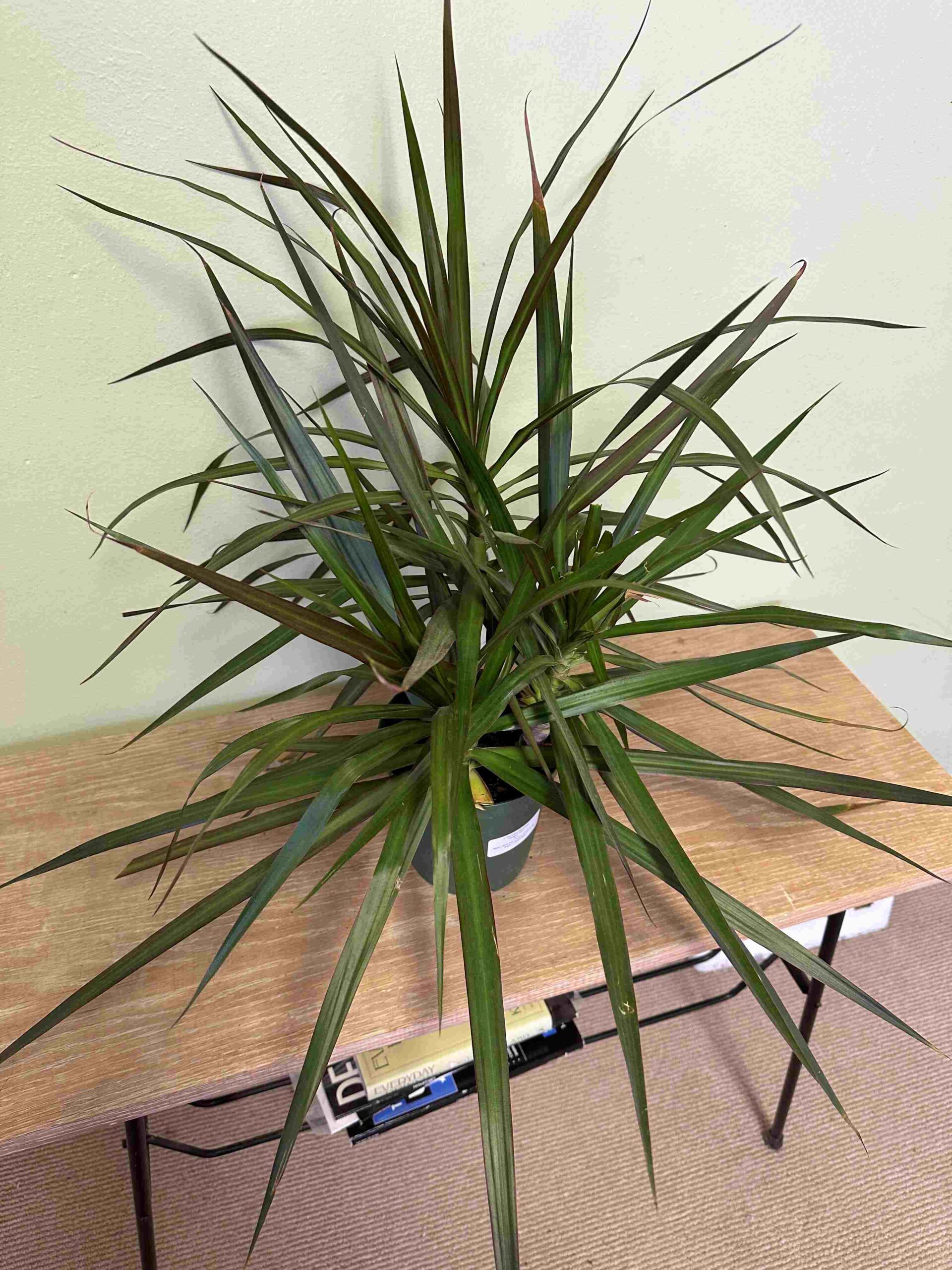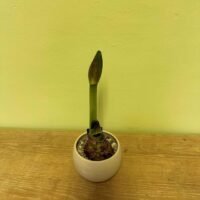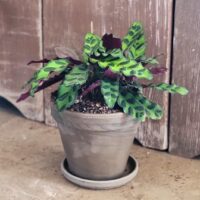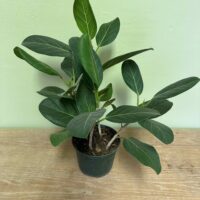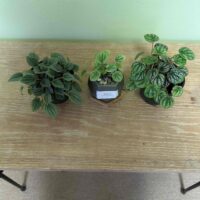Dracaena marginata, more commonly known as a dragon tree, is an attractive plant with green sword-like, red-edged leaves. Native to Madagascar, the eye-catching spiky tree is known as a great entry plant for household gardeners—it’s easy to care for, drought-tolerant, and nearly indestructible.
The slow-growing plant can be planted year-round and boasts tiny white flowers in the spring (though it rarely flowers indoors). This small tree will grow to about 20 feet in warm outdoor climates, but it is generally grown as a potted houseplant and kept pruned to 6 feet or less. Keep the dragon tree away from pets because it’s toxic to animals if ingested.
Thanks to its tolerance for a wide range of temperatures, dragon trees are very popular as large potted plants for homes and offices. They should be planted in well-draining soil and watered regularly during their growing season. Though they can thrive in a variety of light conditions, they do best with indirect bright light.
Light
Dragon trees grow best in bright light but can also survive in partial shade. Keep in mind, plants kept in lower light situations will grow slower and produce smaller leaves with less intense color. Additionally, take care not to place your dragon tree in a spot that receives direct rays of sunlight—its foliage can burn easily.2
Soil
When growing dragon tree as a potted plant, use a loose, well-drained potting mix—loamy soil amended with peat moss is ideal. Make sure the container you choose has room for the plant’s extensive root system. Some varieties are imported from Hawaii and will arrive with lava rock—if this is the case, remove about one-third of the rock and replace it with potting soil.
Water
Like with many drought-tolerant plants, it’s easy to over-water the dragon tree. To ensure you don’t drown it, wait until the top half of the soil is dry before watering (this can often take three weeks or more). If the plant develops brown tips on its leaves, that’s usually a sign that it’s either receiving too much water or that the water you’re using has too much salt or fluoride, which can cause discoloration. To avoid fluoride, water your dragon tree with distilled or non-fluoridated water. If the plant has yellow leaves, it usually means it needs more water.2
Temperature and Humidity
Dragon trees prefer warmer temperatures between 70 and 80 degrees Fahrenheit.2 Regular household humidity should be fine for them, but if your house is particularly dry, you can consider misting the pant lightly from a spray bottle every few days.

